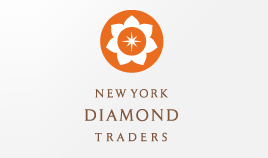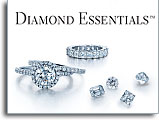The
romance of jewelry is a well documented love affair. Do you remember watching a
movie, in which the protagonist does not propose marriage to his beloved with a diamond? Jewelry, people say, helps us express those emotions, that we cannot
express with words. How though, did this trend come to be? In our first part,
we examined the evolution of jewelry from the ancient to the middle ages. This
part will continue that trend and also answer the question, who invented the
trend of proposing with a diamond ring?
In
the medieval times:
The
medieval times were among the darkest times in human history. Also known as the
dark ages, they were a time of religious persecution and oppression. It was
also at this time that the world got its first taste of quality jewelry. The
Turks having conquered Constantinople, in 1453, had barred the land trading
route between Europe and Asia. This fuelled the era of European seafaring, in the hope of finding an
alternate route to the Indies and Asia. It was around this time that
Christopher Columbus accidentally discovered the continent of America and with
it, her vast untapped mineral reserves became available to the Europeans for
the very first time.
From
the ‘new’ world came vast quantities of gold, newer unexplored minerals and
stones like jade and rubies. This led to a boom of sorts, where newer and more
intricate jewelry started being fashioned for the wealthy, those of
aristocratic leanings and for kings. The story of how Louis XIV had his royal
jeweler fashion a new cut of diamond shaped like his amour’s lips is legendary.
So was the Russian Royal family’s obsession with the famed Faberge egg.
But
probably the most famous of all the royal associations is that of the British
Royal family’s with the Kohinoor. Arguably the most famous gem in the world,
the Kohinoor was acquired by Queen Victoria, after the Queen’s proclamation of
1858, that formalised British rule in India. The Kohinoor was part of the
reparations the Indians were levied with for inciting and participating in the
Sepoy Mutiny of 1857. A list of the owners (erstwhile) of the gem is a virtual
who’s who of world history, from Nadir Shah, to Shahjehan and then the Queen of
England.
In
modern times:
Jewelry
has evolved to being more of a style statement today. “Diamonds and rap have become almost synonymous. The bling tradition,
where the more ice you have on your person means the higher your social
standing is a direct correlation between hip-hop and diamonds,” says Lydia
Dunham, a celebrity stylist, “Some of the
biggest consumers of diamonds are the modern royalty, like movie stars and
A-list celebrities.” Today, you aren’t in love until and unless you are
displaying a one-of-a-kind diamond ring. This trend was popularised by the De
Beers Diamond Company. Likening diamonds to eternal love was a marketing
masterstroke. Infusing popular culture with diamonds saw the golden age (pun
intended) of the trade come into being. The line, “Diamonds are forever”,
changed the way we perceive diamonds.
Jewels
in popular culture have been celebrated as the ultimate symbols of love. So
much have they pervaded our lives that we’ve named movies, books and even
children after them. The use of jewelry these days is, as a unique reflection
of your personal. There may have been wars fought to secure jewels, but for one
thing, they will always remain an intensely personal experience!








No comments:
Post a Comment